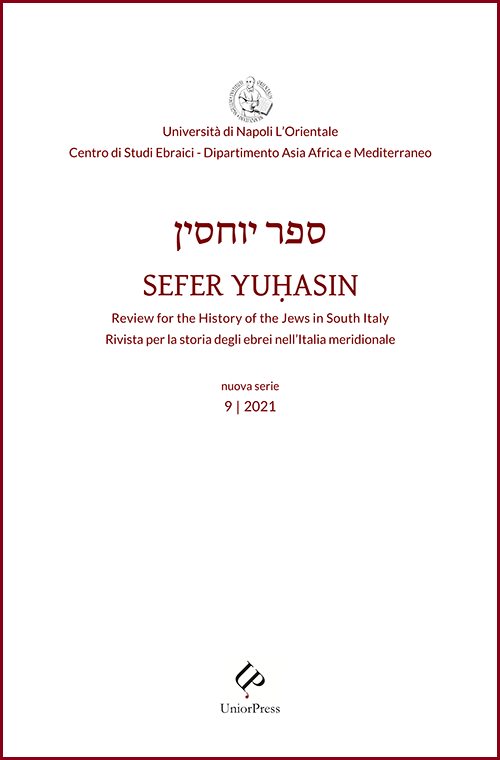Manigoldi ebrei nel medioevo: rassegna critica e nuove notizie da Candia
DOI:
https://doi.org/10.6093/2281-6062/8687Abstract
Jewish executioners in the Middle Ages: a critical review and some news from Candia
In 1431, Mošeh de Bonavoglia, general judge of the Sicilian Jewish communities, forwarded a plea to Alfonso the Magnanimous to put an end to what had become a custom for the king’s officers: namely, forcing the Jews to carry out executions and corporal punishments of Christians. What was the origin of this custom, that remained in vogue until the decree of expulsion in 1492, and elsewhere even later? The article begins with a critical review of documentation attesting to the use of Jews as executioners ‒ first in the Byzantine Empire and then in the Bulgarian Empire and, later on, in Angevin Corfu, Venetian Crete, Sicily, Modone, Corone, and in Naples ‒ along with secondary literature on this topic. The article’s attention then shifts to Candia (Crete), where between 1389 and 1527, an almost systematic use of Jewish executioners (the majority of whom were Sicilian) is documented. It has been a belief of long-standing that the compulsion imposed on the Jews to hold the post of executioner was a legacy of the Byzantine Empire. In the Byzantine Empire, however, attestations of this constraint are greatly sporadic. Still, despite some uncertainty as to the origins of the practice of forcing Jews to serve as executioners, the oldest attestations of the systematic use of Jews in this role all come from Latin colonies carved out of former Byzantine territories. This systematic use can therefore be interpreted as an indication of resistance efforts on the part of the native Greek population to Venetian and Angevin authority and possibly through these channels introduced in Sicily at a later time.
Downloads
Downloads
Published
How to Cite
Issue
Section
License
Gli autori che pubblicano su questa rivista accettano le seguenti condizioni:
- Gli autori mantengono i diritti sulla loro opera e cedono alla rivista il diritto di prima pubblicazione dell'opera, contemporaneamente licenziata sotto una Licenza Creative Commons - Attribuzione che permette ad altri di condividere l'opera indicando la paternità intellettuale e la prima pubblicazione su questa rivista.
- Gli autori possono aderire ad altri accordi di licenza non esclusiva per la distribuzione della versione dell'opera pubblicata (es. depositarla in un archivio istituzionale o pubblicarla in una monografia), a patto di indicare che la prima pubblicazione è avvenuta su questa rivista.
- Gli autori possono diffondere la loro opera online (es. in repository istituzionali o nel loro sito web) prima e durante il processo di submission, poiché può portare a scambi produttivi e aumentare le citazioni dell'opera pubblicata (Vedi The Effect of Open Access).


